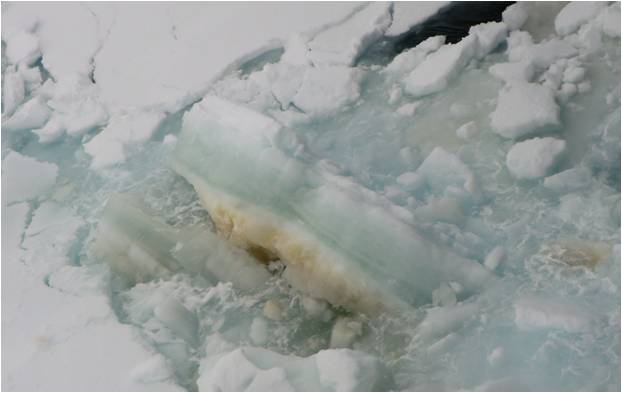Comparative functional biodiversity of Antarctic and Arctic Sea Ice Communities
Comparative functional biodiversity of Antarctic and Arctic Sea Ice Communities (COMPARC)
Anique Stecher
Sea ice is a seemingly hostile habitat with regard to its abiotic constraints. Despite these harsh conditions, sea ice is heavily populated by microbial organisms, which constitute to an ecosystem of global significance. The aim of this project is to determine the eukaryotic biodiversity and transcriptional activity in Arctic sea ice samples using phylogenetic approaches, and to compare the results to respective data obtained from Antarctic sea ice samples. Thus, we want to describe the molecular biodiversity of selected sea ice communities by generating environmental 18S rDNA libraries, helping us to unravel the identity of unknown or unculturable species („hidden biodiversity“). We also aim for determining the transcriptional input of eukaryotic sea ice organisms to ecosystem functioning by randomly sequencing environmental cDNA samples. Using recently developed phylogenetic tools we will determine function and phylogenetic affiliation of Expressed Sequence Tags (ESTs) and link sea ice biodiversity with transcriptional activity of major groups and selected genomes and metagenomes. We further intend to correlate biodiversity and transcriptional activity with in situ physical and biochemical parameters measured during sampling. Finally, we will compare the functional biodiversity in Antarctic versus Arctic sea ice. Since psychrophilic microorganisms possess unique physiological adaptations to their extreme habitat, they are potentially interesting objects for applied science.

